|
|
Post by spindrift on Mar 8, 2009 20:06:50 GMT
Eighteen months ago I trekked to the ancient walled town of Lo Manthang, Upper Mustang. Here is a map of the area. Mustang is surrounded on three sides by Tibet (presently occupied by China) -  Mustang is the arid region near the starting point of the Kali Gandaki river, beyond the Annapurna and Daulagiri ranges. It is high altitude desert country up on the Tibetan plateau. I suppose we never travelled at less than 13,500ft. Mustang is, perhaps, the last enclave of pristine Tibetan culture. Isolated from the rest of the world it has evolved its own culture and traditions. Untouched by modern civilization life in Lo goes on as it always has since medieval times. The Teji festival is a three day ritual known as 'The Chasing of the Demons' and is centred around the Teji myth which tells the story of a deity who does battle with a demon to save the kingdom of Lo. The demon is eventually vanquished and expelled from the land. Teji comes from the Tibetan words 'ten che' which means 'the hope of the Buddha Dharma prevailing in all worlds'. It is a spring renewal festival that celebrates the triumph of good over evil. This is a picture of part of Lo Manthang. 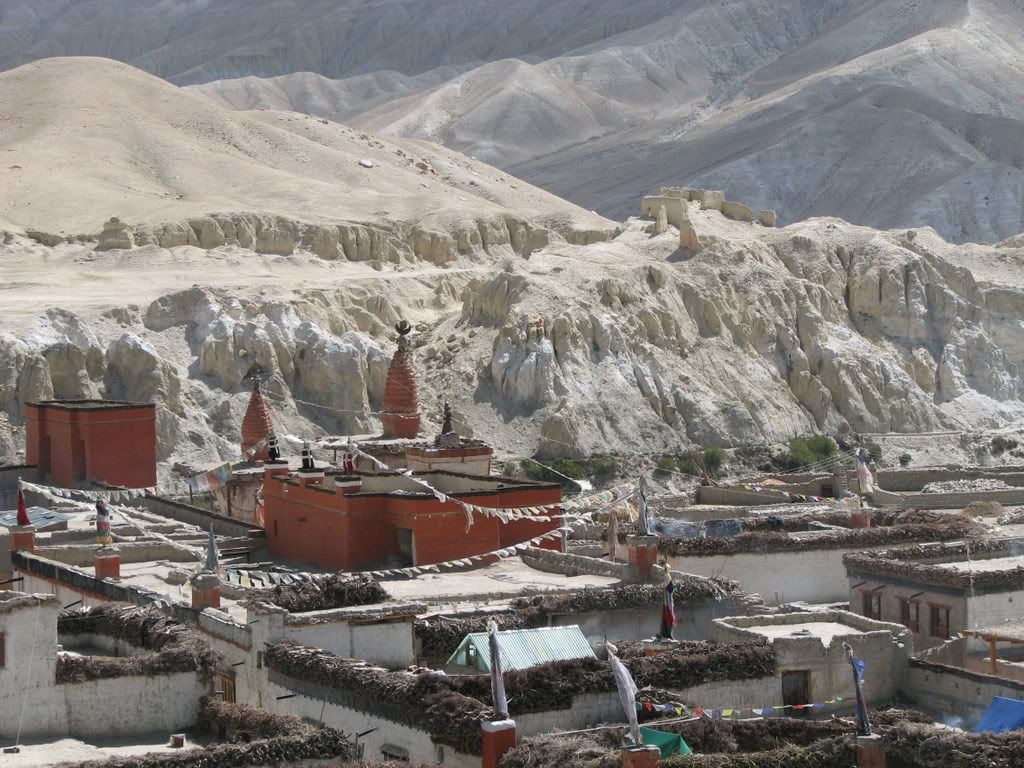 The festival takes place in the main town square that is overlooked by the king's palace. A huge thangka is unfurled and monks sit beneath it, chanting prayers and making music. 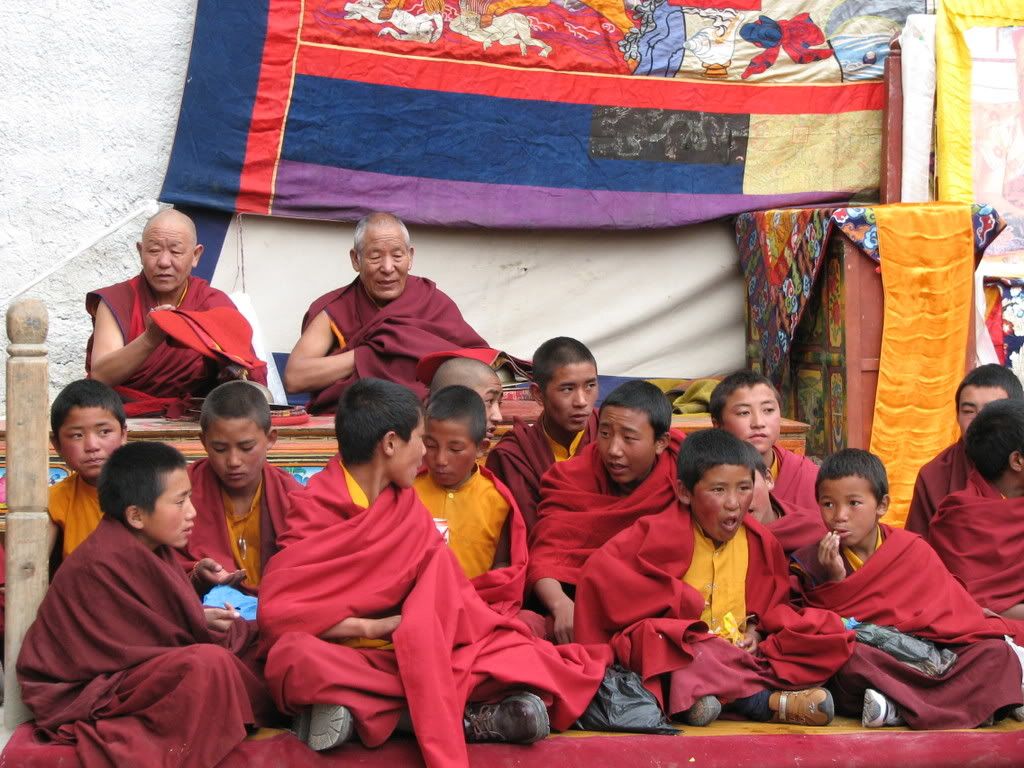 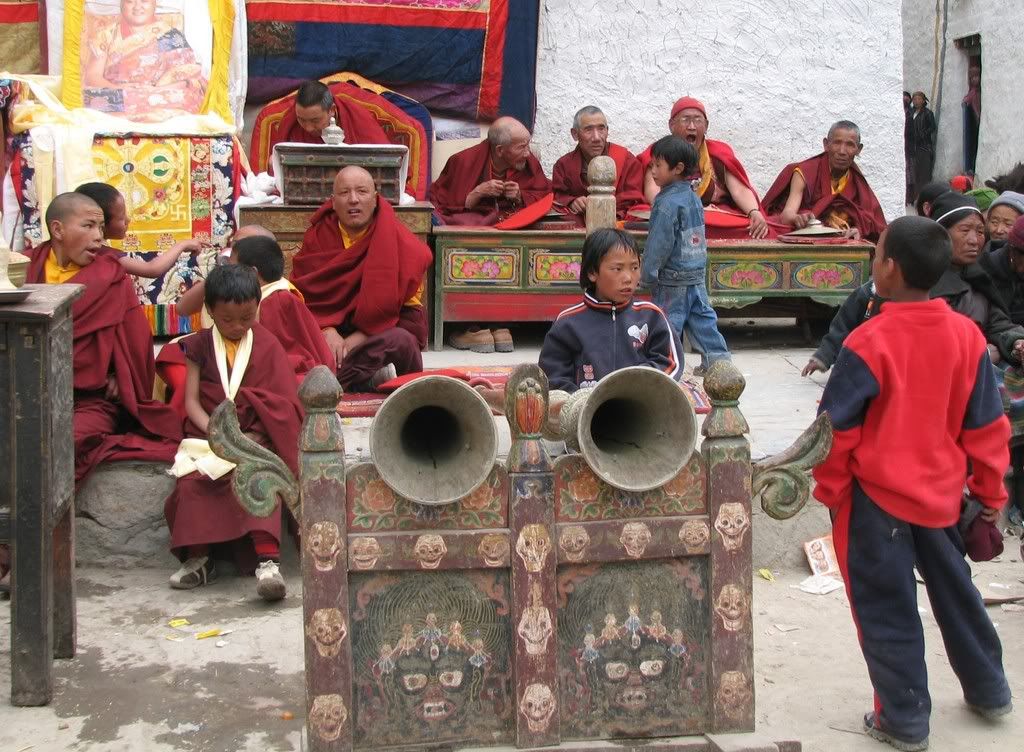 To the rhythm of drums banging, symbals clashing and conch shells and horns being blown the dancers act out the ritual.. 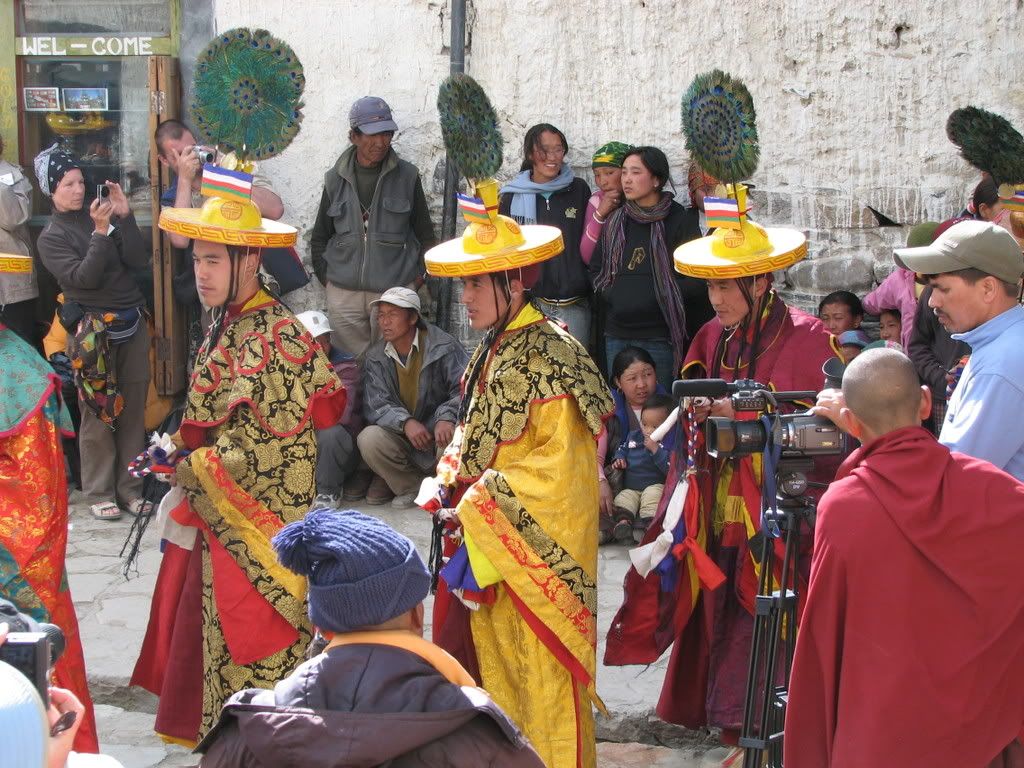 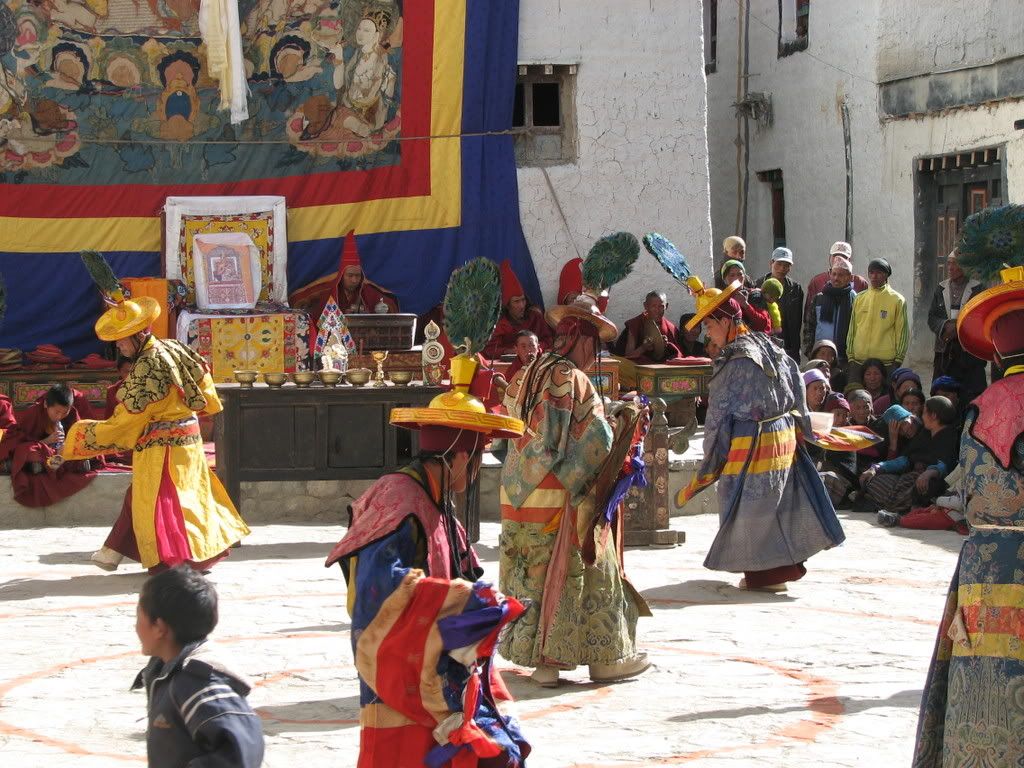 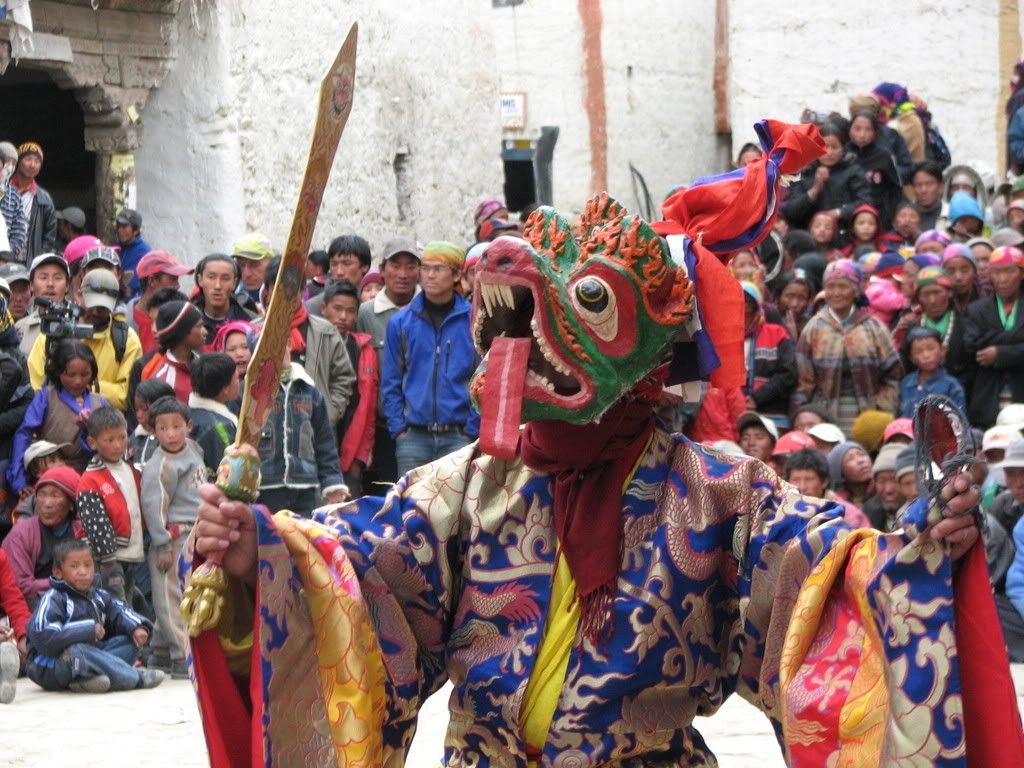 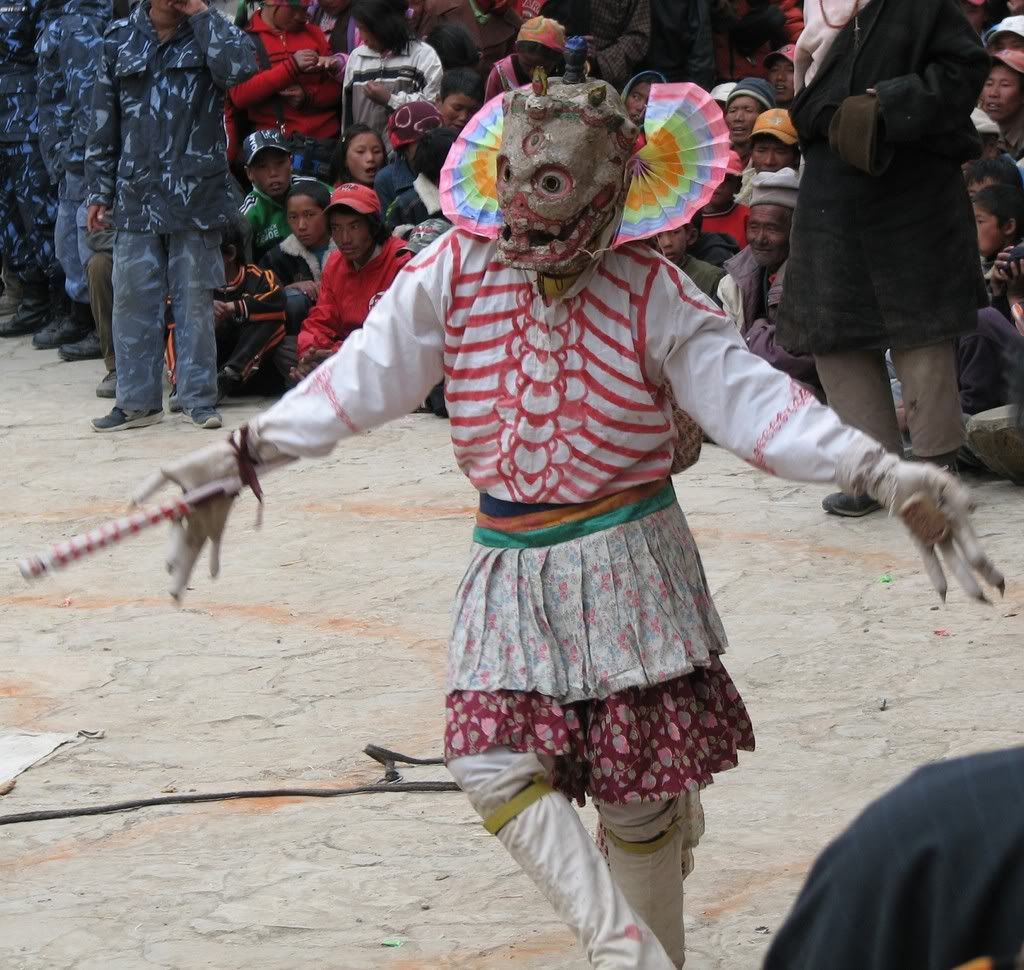  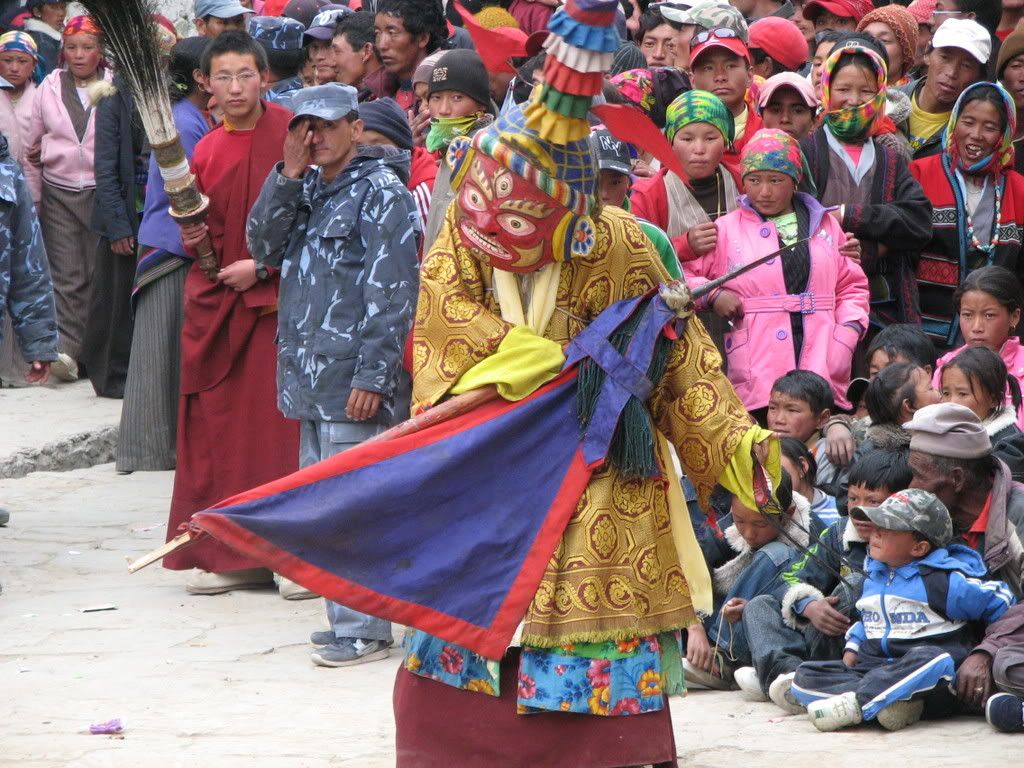 |
|
|
|
Post by spindrift on Mar 8, 2009 20:17:35 GMT
The deity Manjushri is depicted with Buddhas on the thangka.  As this is the biggest festival of the year, everyone crowds into the square to watch it. 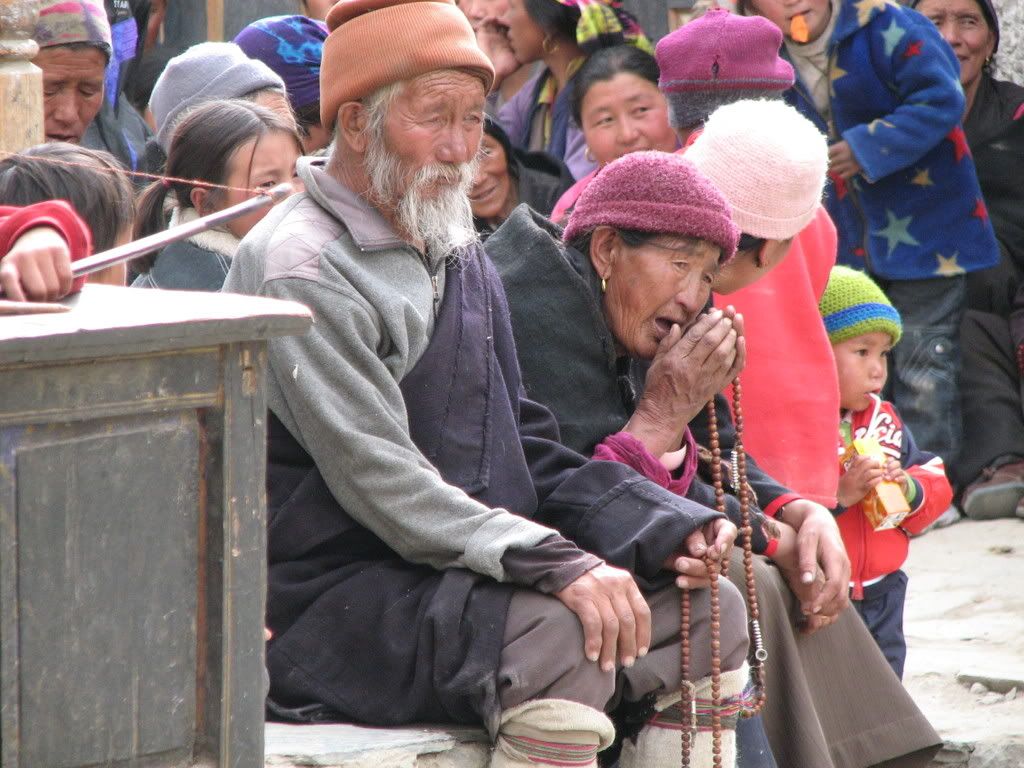  Buddhist monks chant the holy sutras. 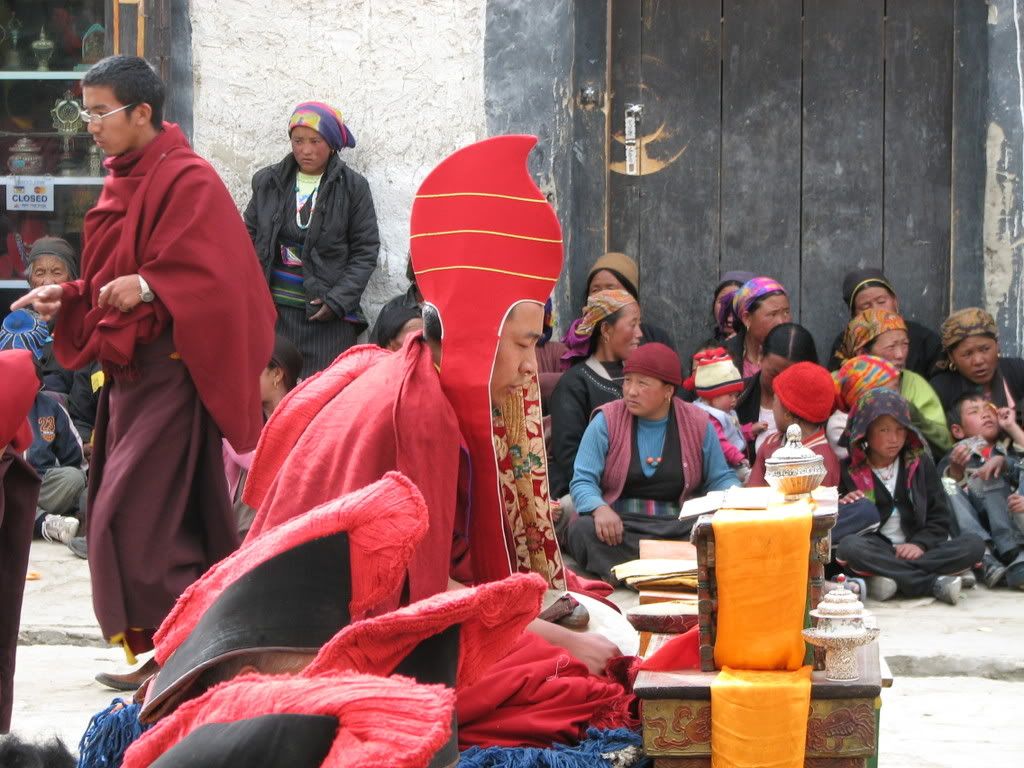 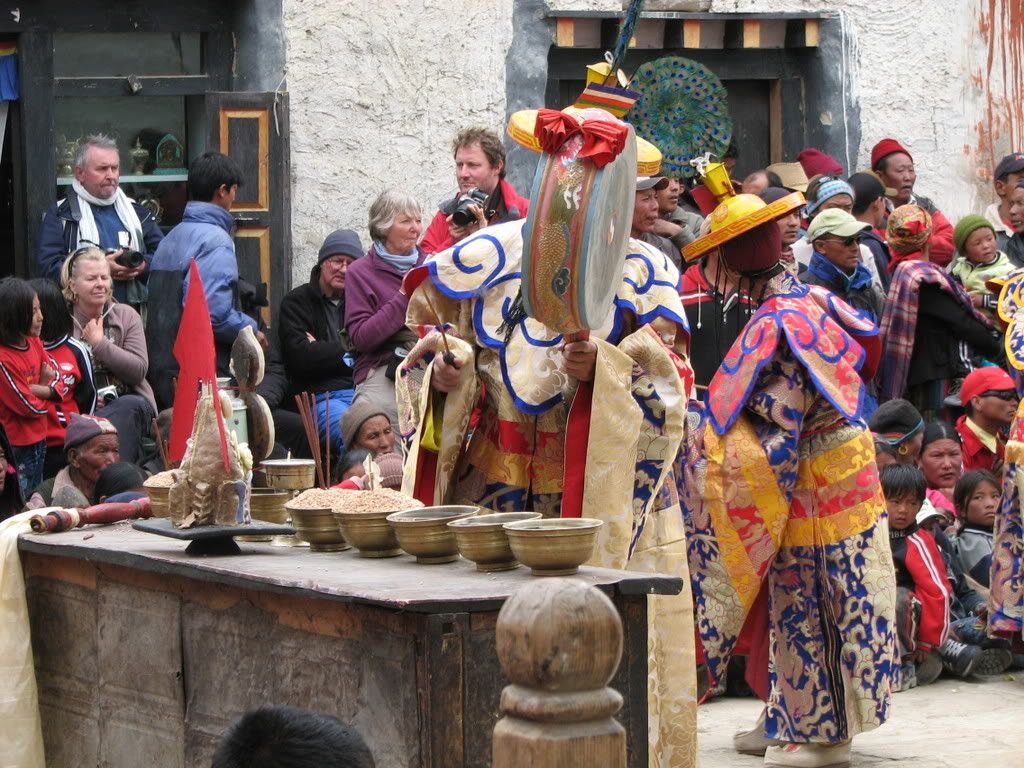 Finally, on the third day the demon is captured, bound (or killed) and cast out. Good has triumphed over evil. 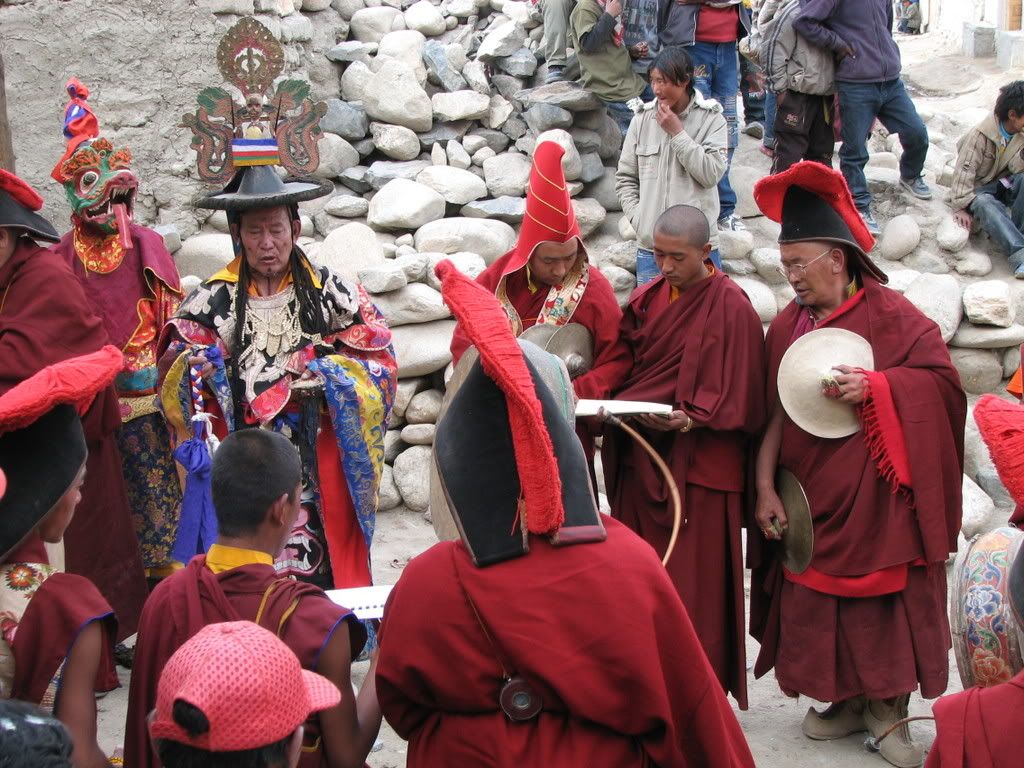 |
|
|
|
Post by Deleted on Mar 8, 2009 20:27:59 GMT
Fantastic! I think what interested me the most were the intense expressions on the faces of the participants. In the West, I don't think we could ever find a 'spiritual' crowd looking so unanimously earnest.
Of course, I find religious fervor somewhat scary, so this brings out mixed emotions in me.
|
|
|
|
Post by bixaorellana on Mar 8, 2009 21:05:44 GMT
Spindrift, you just keep topping yourself! The pictures and story gorgeous and exotic, but your photos show us what a fun human event the Teji festival is as well. What very handsome people the Mustangians are!
Thank you for the map, too -- that's a big help.
I have to ask ~~ did you get any of those incredible textiles while you were there?
|
|
|
|
Post by spindrift on Mar 8, 2009 22:10:54 GMT
There isn't much for sale in Lo Manthang since not many people visit (it's a difficult 5 day trek from the nearest airstrip and it's not for those who are afraid of heights. It's also a restricted area - there are no backpackers in Mustang. One has to be able to afford to take a team of mules, guides and all the food one needs for the 13 day journey) and there are few shops. There is no electricity in the kingdom, no banks, no roads, no vehicles, no plastic, no advertising, no internet connections, no piped water. Every last thing we took into Mustang had to be taken out again. Admirably we returned with our empty food cans, glass bottles and plastic water bottles. This is how items are offered for sale 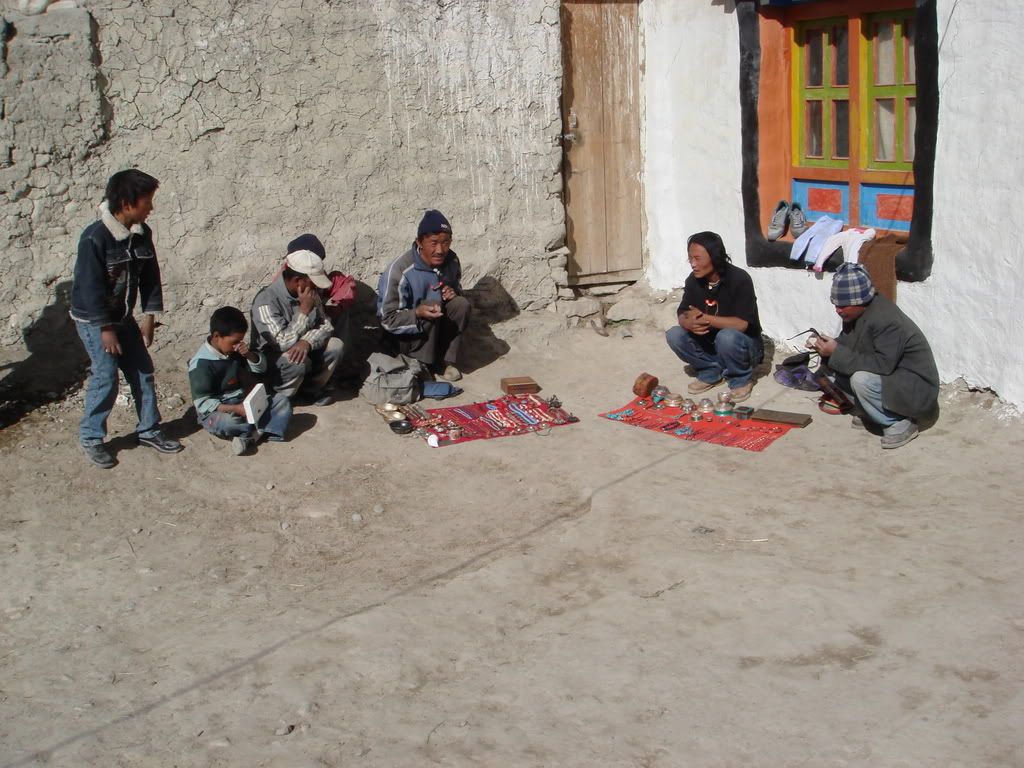 But, yes, I do have some Tibetan brocades. I bought them in Kathmandu. |
|
|
|
Post by bixaorellana on Mar 8, 2009 22:28:48 GMT
 I am a shallow person, aren't I?! Actually, I'm glad I asked, since it leads to the question of where the local people get food. Are they able to grow anything? (beautiful window behind the guy in the plaid cap!)
|
|
|
|
Post by spindrift on Mar 8, 2009 22:46:53 GMT
Barley is the subsistence food. It grows at 13,000ft which is really astounding. There is a short growing season from about May to September. It is harvested, roasted and then ground and finally mixed with rancid yak milk to produce the Tibetan staple of 'tsampa'. This is tsampa that I bought for a few pennies whilst walking in the field outside the town. I broke some pieces off to taste it, offered it to my fellow trekkers (no takers) and I gave it back to the villagers.  Food is hard to come by in Mustang. There simply isn't enough grain to feed everyone and rice and wheat must be brought up from the far valleys (Pokhara) on mules. I met a charming young Italian whilst at Lo. He had lived there for 9 years restoring art in the old gompas (temples). He said only one green leaf type vegetable grew there...something a bit like spinach. His food was flown in and dropped by helicopter once every few months - pasta, cheeses and salamis from Italy amongst the goodies. The people in Mustang also live on Butter tea. This is made from grating tea from tea-blocks from China and mixing it with yak butter and yak milk. It is very salty and difficult for foreigners to drink. It's more like a very salty soup than tea. I can only drink one cup. It is a Tibetan tradition that as soon as your cup is empty they re-fill it until after the third or fourth cup you are permitted to refuse any more. My only drinking one cup would have been consider bad manners on my part but I'd be forgiven because I am a foreigner. |
|
|
|
Post by hwinpp on Mar 9, 2009 1:27:57 GMT
Is Mustang occupied by India?
|
|
|
|
Post by spindrift on Mar 9, 2009 8:08:21 GMT
No, Mustang is a part of Nepal. The indigenous people are Tibetan.
|
|
|
|
Post by hwinpp on Mar 17, 2009 5:13:26 GMT
Great pics here Spindrift. Sorry for my somewhat spurious remark further up.
|
|
|
|
Post by spindrift on Mar 17, 2009 8:51:23 GMT
|
|
|
|
Post by jetsetj on Apr 1, 2009 18:11:45 GMT
Awesome pics.
thanks for the map and history of these beautiful people.
|
|
|
|
Post by spindrift on Apr 1, 2009 21:19:43 GMT
The small enclave of Upper Mustang, surrounded on three sides by Tibet (under Chinese control) is, I am told, the only remaining place in the world where Tibetans are free to live as they've always lived (without Chinese domination). It is inspirational to go there.
|
|